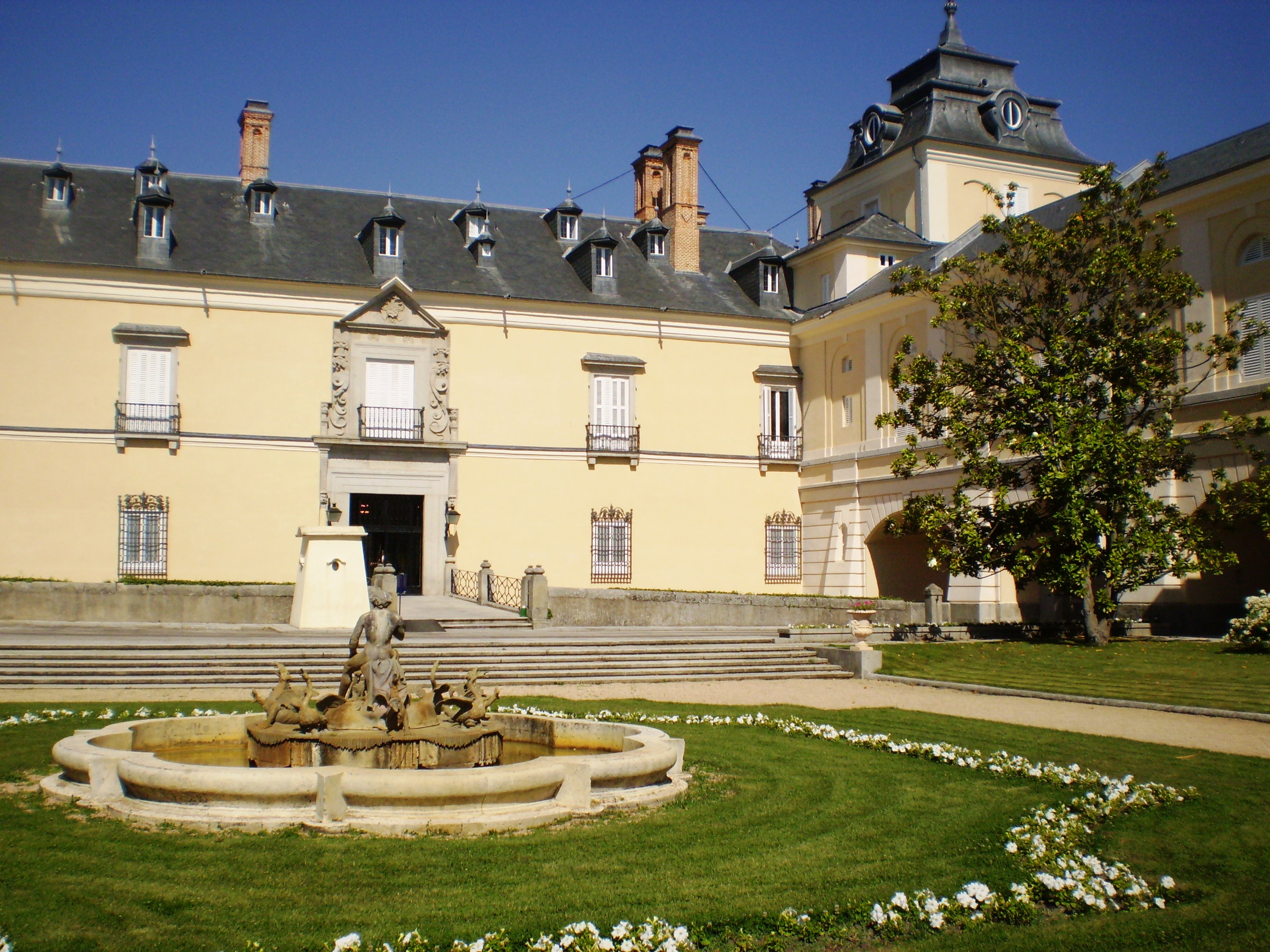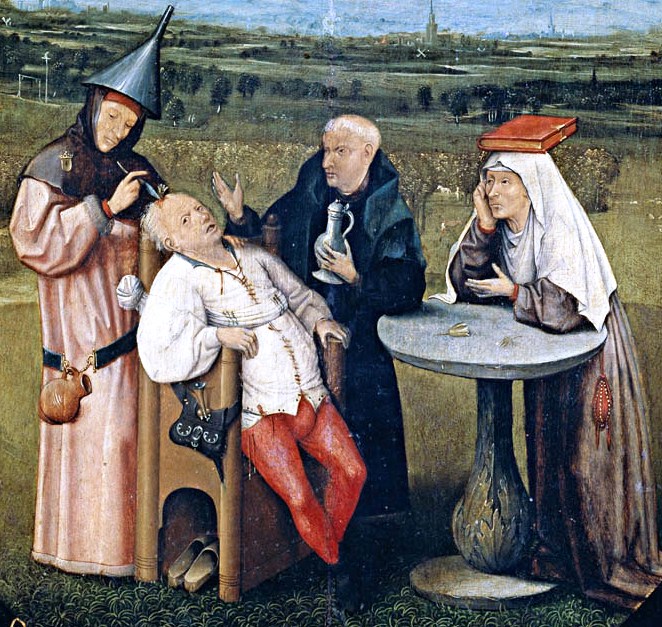|
The Surgeon (painting)
''The Surgeon'' or ''The Village Surgeon'' is a c.1550-1555 oil on panel painting by Jan Sanders van Hemessen. It was first catalogued in 1614 in the Spanish royal collection at the El Pardo Palace. It is now in the Prado Museum in Madrid. It shows a barber surgeon carrying out a trepanation Trepanning, also known as trepanation, trephination, trephining or making a burr hole (the verb ''trepan'' derives from Old French from Medieval Latin from Greek , literally "borer, auger"), is a surgical intervention in which a hole is drille .... References category:Paintings of the Museo del Prado by Flemish artists category:Medicine in art category:1550s paintings {{16C-painting-stub ... [...More Info...] [...Related Items...] OR: [Wikipedia] [Google] [Baidu] |
Jan Sanders Van Hemessen
Jan Sanders van Hemessen (c. 1500 – c. 1566) was a leading Flemish Renaissance painter, belonging to the group of Italianizing Flemish painters called the Romanists, who were influenced by Italian Renaissance painting. Van Hemessen had visited Italy during the 1520s, and also Fontainebleau near Paris in the mid 1530s, where he was able to view the work of the colony of Italian artists known as the First School of Fontainebleau, who were working on the decorations for the Palace of Fontainebleau.Burr Wallen. "Hemessen." Grove Art Online. Oxford Art Online. Oxford University Press. Web. 20 December 2016 Van Hemessen's works show his ability to interpret the Italian models into a new Flemish visual vocabulary.Jan Sanders van Hemessen, ''Christ as Tri ... [...More Info...] [...Related Items...] OR: [Wikipedia] [Google] [Baidu] |
Spanish Royal Collection
The Spanish royal collection of art was almost entirely built up by the monarchs of the Habsburg family who ruled Spain from 1516 to 1700, and then the Bourbons (1700–1868, with a brief interruption). They included a number of kings with a serious interest in the arts, who were patrons of a series of major artists: Charles V and Philip II were patrons of Titian, Philip IV appointed Velázquez as court painter, and Goya had a similar role at the court of Charles IV. The royal family were the most important patrons of Spanish art throughout this period, although some important artists including El Greco, Jusepe de Ribera, and Zurbaran were little patronised. Foreign artists were often imported, although even in the 16th century the most successful were often reluctant to go to Spain, partly because they feared they would never be allowed to leave. In addition, at various periods, especially in the 16th and 17th centuries, the monarchs bought paintings abroad on a significan ... [...More Info...] [...Related Items...] OR: [Wikipedia] [Google] [Baidu] |
El Pardo Palace
The Royal Palace of El Pardo ( es, Palacio Real de El Pardo, ) is one of the official residences of the Spanish royal family and one of the oldest, being used by the Spanish monarchs since Enrique III in the 15th century. It is administered by the ''Patrimonio Nacional'' agency and it currently serves as a state guest house. Overview The palace began as a royal hunting lodge. It became an alternative residence of the kings of Spain until the reign of King Alfonso XII of Spain, who died in the palace in 1885. King Enrique III of Castile ordered the building of the pavilion in 1406, on Mount El Pardo, because of its abundant game. Later, in the time of Emperor Charles V (1547), it was transformed into a palace by the architect Luis de Vega. On 13 March 1604, a massive fire destroyed many of the paintings it housed, including masterpieces by Titian. King Carlos III of Spain renovated the building in the 18th century, appointing his architect Francesco Sabatini to undertake t ... [...More Info...] [...Related Items...] OR: [Wikipedia] [Google] [Baidu] |
Prado Museum
The Prado Museum ( ; ), officially known as Museo Nacional del Prado, is the main Spanish national art museum, located in central Madrid. It is widely considered to house one of the world's finest collections of European art, dating from the 12th century to the early 20th century, based on the former Spanish royal collection, and the single best collection of Spanish art. Founded as a museum of paintings and sculpture in 1819, it also contains important collections of other types of works. The Prado Museum is one of the most visited sites in the world, and is considered one of the greatest art museums in the world. The numerous works by Francisco Goya, the single most extensively represented artist, as well as by Hieronymus Bosch, El Greco, Peter Paul Rubens, Titian, and Diego Velázquez, are some of the highlights of the collection. Velázquez and his keen eye and sensibility were also responsible for bringing much of the museum's fine collection of Italian masters to Spain, ... [...More Info...] [...Related Items...] OR: [Wikipedia] [Google] [Baidu] |
Barber Surgeon
The barber surgeon, one of the most common European medical practitioners of the Middle Ages, was generally charged with caring for soldiers during and after battle. In this era, surgery was seldom conducted by physicians, but instead by barbers, who, possessing razors and coordination indispensable to their trade, were called upon for numerous tasks ranging from cutting hair to amputating limbs. In this period, surgical mortality was very high due to blood loss and infection. Yet, since doctors thought that blood letting treated illness, barbers also applied leeches. Meanwhile, physicians considered themselves to be above surgery. Physicians mostly observed surgical patients and offered consulting, but otherwise often chose academia or working in universities. Some chose to reside in castles, where they treated the wealthy. Middle Ages in Europe Due to religious and sanitary monastic regulations, monks had to maintain their tonsure (the traditional baldness on the top of th ... [...More Info...] [...Related Items...] OR: [Wikipedia] [Google] [Baidu] |
Trepanation
Trepanning, also known as trepanation, trephination, trephining or making a burr hole (the verb ''trepan'' derives from Old French from Medieval Latin from Greek , literally "borer, auger"), is a surgical intervention in which a hole is drilled or scraped into the human skull. The intentional perforation of the cranium exposes the ''dura mater'' to treat health problems related to intracranial diseases or release pressured blood buildup from an injury. It may also refer to any "burr" hole created through other body surfaces, including nail beds. A trephine is an instrument used for cutting out a round piece of skull bone to relieve pressure beneath a surface. In ancient times, holes were drilled into a person who was behaving in what was considered an abnormal way to let out what people believed were evil spirits. Evidence of trepanation has been found in prehistoric human remains from Neolithic times onward. The bone that was trepanned was kept by the prehistoric people and m ... [...More Info...] [...Related Items...] OR: [Wikipedia] [Google] [Baidu] |
Paintings Of The Museo Del Prado By Flemish Artists
Painting is the practice of applying paint, pigment, color or other medium to a solid surface (called the "matrix" or "support"). The medium is commonly applied to the base with a brush, but other implements, such as knives, sponges, and airbrushes, can be used. In art, the term ''painting ''describes both the act and the result of the action (the final work is called "a painting"). The support for paintings includes such surfaces as walls, paper, canvas, wood, glass, lacquer, pottery, leaf, copper and concrete, and the painting may incorporate multiple other materials, including sand, clay, paper, plaster, gold leaf, and even whole objects. Painting is an important form in the visual arts, bringing in elements such as drawing, composition, gesture (as in gestural painting), narration (as in narrative art), and abstraction (as in abstract art). Paintings can be naturalistic and representational (as in still life and landscape painting), photographic, abstract, narrative, ... [...More Info...] [...Related Items...] OR: [Wikipedia] [Google] [Baidu] |
Medicine In Art
Medicine is the science and practice of caring for a patient, managing the diagnosis, prognosis, prevention, treatment, palliation of their injury or disease, and promoting their health. Medicine encompasses a variety of health care practices evolved to maintain and restore health by the prevention and treatment of illness. Contemporary medicine applies biomedical sciences, biomedical research, genetics, and medical technology to diagnose, treat, and prevent injury and disease, typically through pharmaceuticals or surgery, but also through therapies as diverse as psychotherapy, external splints and traction, medical devices, biologics, and ionizing radiation, amongst others. Medicine has been practiced since prehistoric times, and for most of this time it was an art (an area of skill and knowledge), frequently having connections to the religious and philosophical beliefs of local culture. For example, a medicine man would apply herbs and say prayers for healing, or an ancie ... [...More Info...] [...Related Items...] OR: [Wikipedia] [Google] [Baidu] |

_21.jpg)




